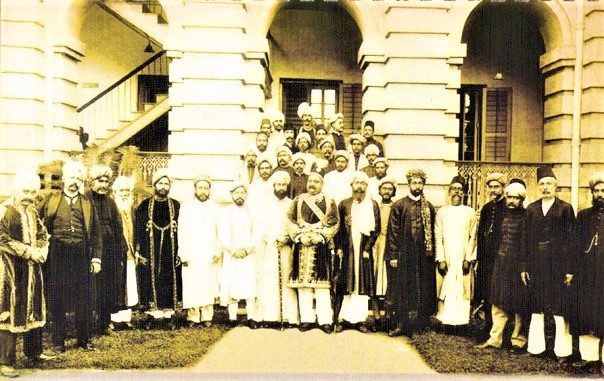Ahsan Manzil is a basic, unique artistic architecture of the ancient history associated with the old history of Bengal. Dhaka is the unique land of ancient tradition and beauty.
It was the residence and headquarters of the Nawab family of Dhaka, British India. This building is one of Dhaka's best architectural patterns. The palace is related to many national and international memories, including many memorable events of Dhaka city and its political development.
Under the pressure of mechanisms and increasing population, many traditions of Dhaka are now threatened. Even after this, many establishments and heritage are still here as an example of its significant history.
This Manzil was the residence of the nawabs of British Indian capital Dhaka. The local identity of the palace is Nawab Bari. That is why, it is not the only manzil, but it is also a symbol of nobility, wealth, and influence of Nawab family. It is a great gift to visit the Ahsan Manzil Museum and see those history philosophies in your own eyes. Through history, it is known that the nawabs here introduced the first modern sport like cricket, hockey, etc. in this country.
Ahsan Manzil location: The Islampur area of old Dhaka is located on the north bank of Buriganga River. And here is one of the best monuments of traditional Dhaka, Ahsan Manzil.
 |
| 1965 |
History: Early in the eighteenth century, Sheikh Inayat Ullah, a zamindar of Jalalpur Pargana (now Faridpur-Barisal), built a garden house in the present place of Ahsan Manzil. Later, his son sold this garden house to a French merchant.
 |
| 1974 |
The French used it as a trade cottage. In 1830, Khwaja Alimullah, the father of Nawab Abdul Ghani, living in Begumbazar, started living after reforming this palace.
 |
| 1976 |
In 1869 Nawab Abdul Ghani renovated the palace. There are currently no existing old buildings here due to many changes and modifications of the palace. After the construction of the new facility, he named it Ahsan Manzil after his beloved son Khwaja Ahsan Ullah.
 | ||||
Khwaja Ahsan Ullah
|
 |
| 1982 |
 |
| Late 1980s |
 |
| 1987 |
Architectural description: The entire Ahsan Manzil is divided into two parts. The dome on the eastern side is called the palace building or Rangmahal. Building on residential buildings in the west is known as the Andarmahal (inner mahal). The palace building is divided into two parts. A high octagonal dome is located on the circular cell in the middle. The east side has a salon, library, card room and three guest rooms and a nostrum, Hindustani room and several living rooms in the west.
The notable thing about Ahsan Manzil is that there is a spacious staircase from the first floor which is on the Buriganga Riverside. In the lower ground, there are the dining hall, billiards room, darbar hall and treasury in the west. The great verandah on both sides of the palace building is north and south.
The government of Nawab Estate acquired the palace in 1952 under the Eviction of Land Acting Act. Ahsan Manzil and his adjacent courtyard were excluded from the property of the Nawab family. After the independence of Bangladesh, significant people of Nawab families migrated abroad. The people who were in this country were not able to maintain the large palace building. As a result, it continues to ruin. In 1974, the family members of Nawab family planned to sell Ahsan Manzil by auction.
But the visionary Bangabandhu Sheikh Mujibur Rahman realized the political and historical importance of the building, on 2 November 1974; the palace building canceled the sale of auction. Then reformed and ordered the establishment of a museum and tourism center here. On 3 November 1985, the Ahsan Manzil Palace and the adjoining Chattar took over by the government and started the construction of the museum.
On 20 September 1992, the Ahsan Manzil Museum was formally inaugurated and opened for all. Of the 31 rooms of Ahsan Manzil, 23 rooms were presented for different displays. The nine rooms were adapted from the India Office Library in London and combined with the photo taken by Fritz Cup in 1904.
Ahsan Manzil museum has been preserved in the Toshakhana, and Crockery rooms and the old offices of the nawab estate have been preserved in the Ahsan Manzil museum.
In the Ahsan Manzil Museum, there are nawab dining rooms, large mirrors used by the nawabs, cupboards, chestnuts, glasses and different plates made by China soil, skulls with the head of Nawab's most trusted elephants, chairs and tables made of various types of ornamental silver and crystal, Floral, ornamentation, Pan pot, drawing room of nawab, dance room, model of Ahsan Manzil etc. A total number of monuments collected in Ahsan Manzil museum is 4077.
In the exhibition at Ahsan Manzil Museum, it can be known from the Nawabs that when drinking water is processed in Dhaka. Earlier, there was no scope for filter drinking water in the city. People's welfare Nawab Abdul Ghani spent two and a half lakhs of Taka to set up a drinking water tube well in Dhaka city. In the contribution of Nawabs, electricity was introduced in Dhaka. On December 7, 1901, he used to make the first lightning lamp in Dhaka, spending around four and a half lakh Taka. From here it is known that when electricity is utilized in the country.
A guide lecturer is always engaged in explaining the audience's about the exhibition. In the gallery of Ahsan Manzil Museum, melodious music is always playing. The entry fee for adult Bangladeshi viewers is Tk 20; Bangladeshi children visit five Taka and 75 Taka for foreign viewers. No need to buy tickets for disabled people. Students are allowed to visit the museum free of cost, but they have to apply before attending.
Films can be made for rent in the exterior. A visitor can come here and enjoy the historical knowledge as well as entertain through travel. Every day, thousands of foreign tourists visit Ahsan Manzil. And after returning, they get back to achieving historical experience as they feel calm.
How to go to Ahsan Manzil? Those who have not gone to Ahsan Manzil before, if their home is too far from Old Dhaka, and then Ahsan Manzil can go directly from CNG. And if the house is near old Dhaka then you can go by rickshaw. Those who are coming from outside Dhaka can goto Babu Bazar / Sadarghat by bus/launch and go there to a rickshaw.

















Ahsan Manzil's place is very spacios, the building itself is very impressive. I'm not sure if its me or the color of it is kind of pinkish. I love the history and how it became as it is right now the evolution and the work efforts of the people to maintain it beautifully. great post!
ReplyDeleteMany thanks for your valuable comment.
DeleteAhsan Manzil is very historic place of Bangladesh. btw Nawabs Elephant Skull looks horrible
ReplyDeleteI remember the place very well when I traveled, nice to read a little historic background and good to see it is still pretty good in shape. I was there 20 years ago
ReplyDeleteMy friend will visit Dhaka in October. I will mention this site and these attractions to him. Thank you! Really amazing old photos too!
ReplyDeleteThank you for stating the timings. It will be quite helpful. Dhaka is a beautiful place and this palace should be in the list.
ReplyDeleteWoah this is pretty cool! I've never known about this until now! Rich history! Great Post!
ReplyDeleteoh my gosh this is absolutely gorgeous! what an incredible building with an incredible past, i need to put this on my bucket list!!
ReplyDeleteThe picture of 1975 with the palace on the north bank of Buriganga River is so beautiful. Recent pictures don't have the waterfront. Has the river receded that much over the years, then?
ReplyDeleteYes, you are right, thanks for your valuable comment.
DeleteI have not been to Dhake but while reading your post I realize heritage of Dhaka in Bangladesh is so similar to Kolkata of India. Impressive post liked lot.
ReplyDeleteYeah, it's almost similar.
DeleteHistoric place of bangladesh interesting read of historical place
ReplyDeleteWhat an amazing place! And this article reads like a history book - how very cool. Thanks for sharing!
ReplyDeleteThe Pink Palace looks so stunning. I would love to visit. It holds so much history!
ReplyDeleteWhy is Ahsan Manzil painted pink? I noticed it wasn't that color until recently.
ReplyDeleteWhen was this painted pink?! I've been to Dhaka & did a whole day of sightseeing, I don't remember seeing a pink palace!
ReplyDeleteI am taking my sister's pink Ferrari and heading there! (joke) Never thought someone would paint a castle like this.
ReplyDeleteWhat a cool palace. My nieces would love to live there.
ReplyDeletebeautiful and interesting photographs!
ReplyDeletePink happens to be my favorite color and considering that my ex nicknamed me Princess, I should totally live there! I thought the your post was very interesting and I would love to visit the museum.
ReplyDeleteWow this is so cool!! And so beautiful!
ReplyDeleteVery impressive building! It holds so much history and I would love to visit this place one day!
ReplyDelete